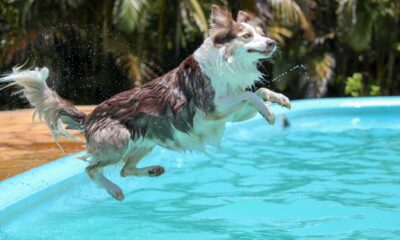Smile
Electric Bacteria Discovery Sparks Hope for Cleaner Future

Quick Smiles:
- A new species of bacteria, found in Oregon, acts like electric wiring.
- This discovery could lead to advances in bioelectronics and pollution cleanup.
- The bacteria, named after the Yaqona people, offers insights into bacterial evolution.
In the mudflats of Oregon, researchers have stumbled upon a fascinating new species of bacteria that behaves like a natural electric wire. This intriguing discovery holds the potential to revolutionize bioelectronic interfaces and aid in environmental cleanup efforts.
The bacteria, a type of “cable” bacteria, was found by researchers from Oregon State University. They identified it in sediment samples from the Yaquina Bay estuary, naming it *Ca. Electrothrix yaqonensis* in honor of the bay and the Native American Yaqona people historically connected to the area.
This remarkable lifeform contains nickel within its structure and produces a membrane that links individual bacterial tissues into long strands. These features enable it to transfer electrons efficiently along its body, a unique trait that could inspire new technologies.
“This new species seems to be a bridge, an early branch within the *Ca. Electrothrix* clade, which suggests it could provide new insights into how these bacteria evolved and how they might function in different environments,” said one of the researchers.
The bacteria’s ability to conduct electricity is not only rare but also advantageous for metabolic processes in its sediment habitat. It showcases a blend of metabolic pathways and genetic traits from the *Ca. Electrothrix* and *Ca. Electronema* genera, allowing it to thrive in both freshwater and saltwater environments.
The researchers highlighted the unique structural features of this species, noting its “largest surface ridges” among cable bacteria, beneath which lie conductive fibers composed of nickel-based molecules. Despite nickel’s toxicity to humans, these fibers facilitate electron transport over long distances, connecting electron acceptors like oxygen or nitrate at the surface with sulfide donors in deeper layers.
“These bacteria can transfer electrons to clean up pollutants, so they could be used to remove harmful substances from sediments,” explained the researchers. “Also, their design of a highly conductive nickel protein can possibly inspire new bioelectronics.”
The discovery of *Ca. Electrothrix yaqonensis* not only enhances our understanding of bacterial evolution but also opens doors to innovative applications in technology and environmental science. This wild and wriggling live wire from the Oregon mudflats might just be the key to a cleaner, more connected future.

-

 Cute Animals2 years ago
Cute Animals2 years agoPuppy Love Patrol: Service Dog Swoons Over K9 Officer Neighbor
-

 Cute Animals2 years ago
Cute Animals2 years agoHugs, Hooves, and Happiness: Newborn Donkey Steals Hearts by Demanding Affection [Video]
-

 Cute Animals2 years ago
Cute Animals2 years agoWATCH: A German Shepherd’s Surprising Parenting Instinct for Lost Ducklings!
-

 Cute Animals2 years ago
Cute Animals2 years agoPetty Pup Pulls Off Hilarious Bone Heist [Video]
-

 Heroes2 years ago
Heroes2 years agoA Lost Dog’s Bark Leads to a Lifesaving Discovery
-

 Cute Animals2 years ago
Cute Animals2 years ago“Pure Love”: Adopted Rescue Dog Can’t Hide How Grateful He Is [Video]
-

 Cute Animals2 years ago
Cute Animals2 years agoTiny but Mighty: Cat with Dwarfism Becomes Internet Star as Owners Adapt Backyard for Her Comfort
-

 Cute Animals2 years ago
Cute Animals2 years agoAdorable Puppy Steals Hearts After a Tiring Swim [Video]
ROY S. MALLMANN II
May 25, 2025 at 1:08 pm
OUTSTANDING!
Bea Adams
May 26, 2025 at 3:47 pm
I’m doing it, and I never thought it was possible until I found this online opportunity. The work is super easy, and you don’t need any prior experience—just a desire to succeed!
Go ON My Profile